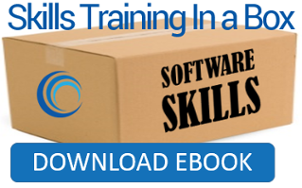Organizations are spending an average of $1,208 per employee on training, according to the Association for Talent Development’s latest State of the Industry Report. I think we can agree that spending on training is a critical investment for any organization, but how do you know if you are getting the most bang for your buck?
In this post, we will explore some ways to gauge success and increase the effectiveness of your corporate training resources.
4 Guidelines for effective corporate training resources:
Do you have clear objectives?
Your corporate training resources are in service to the larger goals of the organization, so make sure you are clear on what advances you intend to get from your training programs. A training-needs analysis is an important first step, identifying who needs training and what kind. If you want to get a sense of skill gaps, look to your employees themselves and their direct supervisors: they have the most intimate knowledge of what it takes to get the work done every day, and where improvements can be made.
Are you meeting your objectives?
Assessment should be done on a continuous basis, both formally and informally. If you have a gut feeling that your corporate training resources are somewhat ineffective, maybe do some interviewing with employees and supervisors so you can qualify your suspicions. Or you might do a little testing to quantify them. It’s never too late to re-evaluate and adjust your corporate training resources. And don’t stop at training evaluations; research shows that the correlation is very weak between a person’s reaction to training and their actual learning.
Is your corporate training program well designed?
According to Dr. Eduardo Salas in an interview for The Wall Street Journal, the design is the single most important element of an effective training program. “It's the thing you do before, during and after. How are you going to allow employees to practice? How are you going to provide feedback? What sort of technology are you going to use? While this may seem obvious, very few organizations really pay attention to this.”
Is there post-training reinforcement?
We have all gone through this type of training, where we are overloaded with content in 1 or 2 days that are packed full of training. In a blog post for ATD, Norman Behar reminds us that “research has consistently demonstrated that unless it is followed by post-training reinforcement, this type of event-based training produces limited results. That’s because successfully changing behaviors is a process, not a one-time event.” It is the organization’s job to set the stage so that when individuals go back to their jobs, they have the opportunity to practice and to apply the skills just learned. They also need the right supervisory support, and other pieces in place to motivate them to sustain the new behaviors and skills.
Is there room in your plan for the KnowledgeWave Learning Site? It is an effective, affordable corporate training resource that you can add to your program. Download our Skills Training In a Box eBook to learn more.








